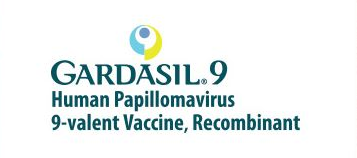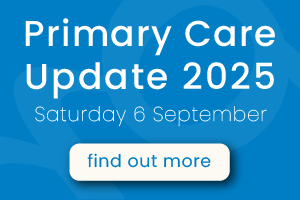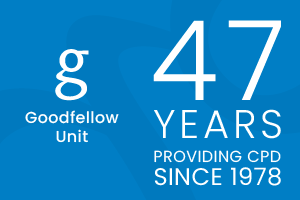
This MedCase was first published in February 2019. It was updated by Dr Hazel Fuiava, MBChB, Dip Paeds, FRNZCGP.
Human papillomavirus (HPV) infection is common, and while it is frequently asymptomatic, patients with genital warts are often seen in general practice. The HPV vaccine can help reduce cases of genital warts, as well as preventing HPV-related cancers.
This MedCase focuses on the diagnosis and treatment of genital warts and discusses opportunities to discuss HPV vaccination.
Adnan, an 18-year-old man, comes to see you at a university health clinic for follow-up of his sexual health check and to discuss treatment of his genital warts and human papillomavirus (HPV) vaccination.
You first met Adnan last week, when he presented with a two-week history of bumpy, non-itchy lesions over the penis and scrotum. He had no urethral discharge, pain or swelling, and is otherwise healthy with no significant past medical history.
Adnan became sexually active after moving to New Zealand a few months ago. He has had two casual male partners. He usually uses condoms but had one episode of unprotected sex approximately 4 weeks ago. He says both his partners told him they had been tested and did not have any sexually transmitted infections (STIs). Adnan has never had STI testing before, and he can’t recall his vaccination history.
You undertook a HEEADSSS assessment and learned that Adnan was born in Syria, though he has lived for most of his life in Australia with his family. He moved to New Zealand last month to study economics at university, and is staying in a university hostel. His family back in Australia are unaware of his sexual activity, and he is concerned that they would not approve of him having sex with men. However, Adnan is close to his a 21-year-old cousin, Joram, who is also studying in New Zealand and knows about Adnan’s sexual activity. Adnan does not smoke cigarettes or drink alcohol. He has tried marijuana but didn’t like it. His mood is good and, although he misses his parents and younger sister, he is enjoying the independence of living away from home for the first time.
On examination last week, Adnan had warty lesions on his penis that you diagnosed as genital warts. There was no urethral discharge. There were no other relevant findings on clinical examination.
Additionally, you offered a full sexual health check, including a first-catch urine sample plus pharyngeal and anorectal swabs for chlamydia and gonorrhoea, and gave him a form for blood tests including HIV, syphilis and hepatitis serology (having explained about the seroconversion window period, and the possibility that more testing may be required).
You offered the HPV vaccine at this first visit.
Key practice points
- HPV vaccine should be offered at the first opportunity. Don’t miss the moment! There is no risk of overdose if he has already been vaccinated, and it’s important to start vaccinating as soon as possible, given that he is already sexually active.
- Seroconversion of syphilis may take up to 3 months, and of HIV up to 6 weeks, (the 'window period'), so consider repeating tests at 3 months after exposure if earlier tests results have come back negative.
Adnan declined to start HPV vaccination at the first visit, as he wanted to first review his Australian health records. You briefly discussed treatment for genital warts, which he wanted time to consider. You booked him for follow-up in 10 days, and gave him some information to take home:
• Patient information page on Genital Warts from Healthify
• Link to the HPV Project website for information about treatment.
Todays consultation
You open the consultation by telling Adnan his test results are negative for STIs, which he is pleased to hear. His main concern is about the genital warts. He wants to know more about this condition, and how he could have got warts when he used condoms.
What are genital warts and how are they spread
Genital warts are symptoms of infection with HPV, which is highly contagious and infection is very common in sexually active people, affecting up to 80% of unvaccinated people.1
While around 25% of people develop warts after HPV infection, most people have no symptoms. This allows HPV to spread easily among people who are unaware that they are infected. Transmission occurs via any skin-to-skin contact as well as through sexual activity, so condom use is not fully protective. In fact, consistent condom use reduces the risk of HPV acquisition by only 30-60%.2
Notes on diagnosing anogenital warts
- The diagnosis of HPV genital warts is based on visual inspection; no further testing is required. Dermnet has some useful images of the variable presentations of HPV warts.
- HPV DNA testing for anogenital warts is not recommended, because results do not confirm the diagnosis and do not inform management.
- The application of 3-5% acetic acid might turn warts white, but is not reliable enough to use as a specific test for HPV.
- Unusual lesions should be biopsied or referred to Sexual Health clinic; be mindful of sinister differential diagnoses such as penile or anal cancer in men (usually small, often ulcerated nodules), or a high-grade squamous intraepithelial lesion in women (previously called vulval intraepithelial neoplasia [VIN]; usually white, red or pigmented papules that may have a warty surface).
Useful websites for patients wanting reliable information about HPV are:
- Genital Warts Te Whatu Ora
- Human papillomavirus (HPV) IMAC
- About HPV HPV NZ
Adnan seems reassured. However, he is embarrassed about the warts and wants to know how long they will last, and whether you can remove them.
Should you treat genital warts and if so, how?
The decision to treat genital warts is made based on the physical and psychological impact of the warts on the patient’s life. Most genital warts resolve spontaneously within 2 years of infection, so doing nothing is a valid option if this is the patient’s preference.
There is no evidence that clinically visible warts facilitate HPV transmission (though this is a commonly held belief), so a decision to treat should not be made on this basis.2 Similarly, treatment that causes the warts to disappear does not necessarily mean that the underlying viral infection has disappeared.
A range of self-administered and clinician-administered treatments are available, and these are summarised nicely by the New Zealand HPV Project in their Guidelines for the Management of genital, anal and throat HPV infection in New Zealand
.An overview table is provided below:
| Site |
Treatment |
| External genital warts |
SELF-ADMINISTERED
PROVIDER-ADMINISTERED
|
|
Cervical warts Vaginal warts |
|
| Urethral meatal warts | Cryotherapy with Cryoprobe (technically difficult with liquid nitrogen). N.B. Risk of stenosis if overzealous treatment. Note: Podophyllotoxin and imiquimod have been used, but limited data. |
| Anal warts |
Cryotherapy. Special open-sided anoscopes and bent probes are available to permit treatment laterally; OR Surgical removal. Intra-anal warts should be referred for specialist management. |
| Oral | Cryotherapy; OR Surgical removal |
Unfortunately for patients and doctors alike, there is no evidence to recommend one treatment over another, and all treatments have significant failure and relapse rates. So, treatment selection should be based on the patient’s preference once they understand the options, with consideration of the size, number and location of warts, the patient’s age, and pregnancy status. Clinician experience is also relevant, as the effectiveness of treatments such as cryotherapy, diathermy and TCA are highly dependent on provider skill; consider referral to Sexual Health Clinic where appropriate.
Adnan elects to try imiquimod and you write him a prescription. However, he seems ill at ease and after some probing, he tells you that he googled HPV and found that it causes cancer. He asks if his warts can progress to cancer.
Are patients with genital warts at higher risk of cancer caused by HPV?
There are over 40 types of HPV that can infect the oral and anogenital regions, and they are divided into low-risk and high-risk types based on their association with precancer or cancer. It is unusual for a high-risk HPV type to cause anogenital warts; the low-risk HPV types 6 and 11 are responsible for approximately 90% of genital warts. In contrast, high-risk types such as HPV-16 and 18 are less likely to cause anogenital warts, but are responsible for almost all cervical cancers and most anal cancers (see Table below)1, 2
Summary of cancers attributable to HPV (data from Guidelines for the Management of genital, anal and throat HPV infection in New Zealand).
| Cancer Type |
Approximate % attributable to high-risk HPV |
Notes |
| Cervical | Almost 100% | HPV-16: 50%; HPV-18: 20%; HPV-31, -45, -52: <5% each |
| Vaginal | 90% | |
| Anal | 80% | Rate cancer but burden of disease is highest in MSM and people living with HIV |
| Penile | 50% | |
| Vulval | 40% | |
| Oropharyngeal | 75% | Oropharyngeal cancer incidence is increasing, particularly in men |
Other factors can increase the likelihood of HPV-related cancers, including cigarette smoking, HIV co-infection, and sexual practices.
Regarding screening, at present in New Zealand, the cervical screening programme is our only form of early detection of an HPV-related cancer. Primary HPV screening for women aged 25 years and older has been introduced in 2023.
So, to answer Adnan’s question, genital warts don’t progress to cancer, and are most likely to be caused by a low-risk strain of HPV (6 or 11). However, he may also be co-infected with a high-risk strain that is associated with cancer.

Vaccination with Gardasil 9 is the most effective strategy to prevent HPV-related cancers
Gardasil 9 covers nine HPV types, including 6 and 11 (most likely to cause anogenital warts), and those types most likely to cause cancer including 16, 18, 31, 33, 45, 52, and 58. There is a school-based programme for vaccination in year 8, or patients can see their GP.
See the Goodfellow eLearning module on HPV immunisation in primary care for further details around administration and funding. The 2024 Immunisation Handbook also has a detailed section on HPV Vaccination.
The ideal approach is to complete the vaccination programme before the patient becomes sexually active and at risk of exposure to HPV. However, those patients already infected with one type of HPV may benefit from vaccination, which gives protection against other types.
How effective is Gardasil 9?
Gardasil is highly effective against the HPV types it is designed to prevent, with efficacy of 96.7% in clinical trials. There are no New Zealand data showing a reduction in cancer rates yet; these data will become apparent over time as the initial cohort of females vaccinated in 2008 age. However, internationally there is evidence of a lower incidence of cervical dysplasia in vaccinated cohorts. Herd immunity has been observed with reduced rates of persistent infection, cervical dysplasia and genital warts resulting from the lower burden of circulating HPV in a vaccinated population.4
Gardasil is also effective at preventing genital warts, an outcome that is easier to measure in the short term. In New Zealand in 2014, there was a 47% reduction in cases of genital warts seen at Family Planning and Sexual Health Clinics since the vaccine was introduced in females in 2008.
The vaccine coverage impacts on the effectiveness, and countries with high vaccine uptake, like Australia, have experienced a large reduction in cases of genital warts. Elimination is possible with sufficient uptake of Gardasil.
Adnan shows you his Australian vaccine record which records one dose of the Gardasil vaccine at age 11 years. He has received no further Gardasil since then. He asks if he needs to start new course.
An interrupted schedule is suitable for Adnan. As he is not immune compromised, he can simply complete his Gardasil 9 course with an extra two doses (see the IMAC website for advice on interrupted schedules, and impaired immunity).
You book Adnan two visits to complete his Gardasil 9 course, and offer a follow-up appointment in 3 months to check on his warts, and to consider further serology for HIV and syphilis. He has no further questions and leaves with his prescription for Imiquimod.
Key practice points
- A consultation for genital warts is a good time to discuss Gardasil vaccination.
- Offer vaccination at the first opportunity, regardless of known vaccination status. It’s important to get started as soon as possible if patients are already sexually active, and there is no risk of overdose.
- Gardasil 9 vaccination is the best available strategy to prevent cancers related to high-risk HPV strains (e.g. HPV-16, 18), which are responsible for almost all cervical cancers and up to 90% of other anogenital, head and neck cancers.
- There is a chance of eliminating genital warts if Gardasil 9 uptake is sufficient, as it provides herd immunity against persistent HPV infection as well as cervical dysplasia and anogenital warts.
- Offer treatment for anogenital warts if they are causing physical or psychological distress.
- Information about catch-up doses, interrupted schedules, funding and special populations is available from the Immunisation Handbook (2024) and IMAC.
This MedCase was created in 2019 by Dr Vicki Mount, MBChB DipPaeds, and reviewed by Associate Professor Nikki Turner MBChB, Dip Obs Auck., DCH London., FRNZCGP., MPH Hons MD Auck.
Recognition of Learning Activities
Don't forget to log your time with The Royal New Zealand College of General Practitioners portal for recognition of learning activities.



